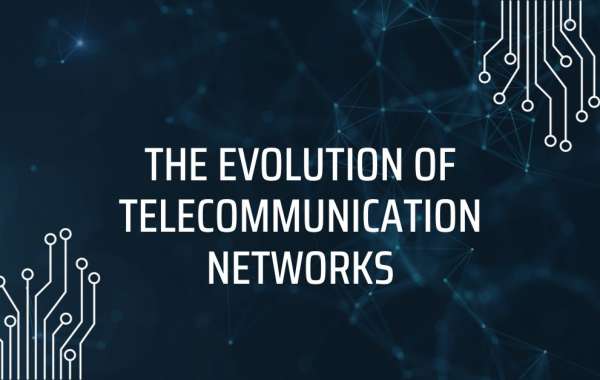Introduction
The evolution of telecommunication networks is a fascinating journey through technological advancements that have fundamentally transformed the way we connect and communicate.
Starting with analog telephone networks in the late 19th century, telecommunication has progressed through the digital era, witnessed the rise of mobile communications, and entered the age of broadband and high-speed data. The transition from 2G to 5G has brought about unprecedented speed, low latency, and massive device connectivity.
The advent of the Internet of Things (IoT) has further extended the capabilities of telecommunication networks, enabling seamless communication between countless connected devices.
Fiber optic networks, edge computing, and the potential integration of quantum communication represent the latest chapters in this ongoing evolution, promising even faster speeds, enhanced security, and transformative possibilities for the future of global connectivity.
The evolution of telecommunication networks has been marked by significant advancements in technology, shaping the way we communicate and share information. Here's an overview of the key stages in the evolution of telecommunication networks:
1. Analog Telephone Networks (1G)
Timeline
Late 19th century to early 20th century.
Description
The earliest telecommunication networks were analogue telephones.
Voice signals were transmitted as analog signals over copper wires.
Limited capacity and quality, primarily supporting voice communication.
2. Digital Telephone Networks (2G)
Timeline
1990s.
Description
Introduction of digital cellular networks (2G).
Digital phones technology allowed for better voice quality and increased capacity.
Introduction of Short Message Service (SMS) for text messaging.
Emergence of GSM (Global System for Mobile Communications) as a standard.
3. Mobile Internet (3G)
Timeline
Early 2000s.
Description
Introduction of 3G networks providing higher data speeds.
Enabled mobile internet access, video calling, and improved data services.
Increased capacity for multimedia applications and internet browsing on mobile devices.
4. Broadband and Data (4G)
Timeline
2010s.
Description
Introduction of 4G (LTE) networks with significantly higher data speeds.
Enhanced capacity for high-definition video streaming, online gaming, and other data-intensive applications.
Improved network efficiency and reduced latency.
5. Introduction of 5G
Timeline
Ongoing (Started in the 2010s and continuing).
Description
The ongoing rollout of 5G networks promises unprecedented speed, low latency, and massive device connectivity.
Enables applications such as augmented reality (AR), virtual reality (VR), and the Internet of Things (IoT).
Utilizes higher frequency bands for faster data transmission.
6. Internet of Things (IoT)
Timeline
Concurrent with 5G.
Description
Integration of telecommunication networks with IoT devices.
Supports communication between a vast number of connected devices, sensors, and machines.
Enables smart homes, industrial automation, and other IoT applications.
7. Fiber Optic Networks and Gigabit Connectivity
Timeline
Ongoing.
Description
Expansion of fiber optic networks for high-speed data transmission.
Gigabit connectivity becoming more widespread, offering ultra-fast internet speeds.
Improves overall network reliability and capacity.
8. Edge Computing and Network Slicing
Timeline
Emerging technologies.
Description
Focus on reducing latency through edge computing, bringing processing closer to end-users.
Network slicing allows the customization of network services for specific applications or industries.
Supports diverse use cases, from autonomous vehicles to critical infrastructure.
9. Quantum Communication (Potential Future)
Timeline
In research and development.
Description
Exploration of quantum communication for ultra-secure, quantum-resistant networks.
Quantum key distribution aims to enhance the security of communication.
A potential future evolution for secure and robust telecommunication networks.
The evolution of telecommunication networks continues to shape the way we connect, communicate, and share information. As technology advances, future developments are expected to bring even faster speeds, lower latency, and innovative applications, further transforming the telecommunications landscape.
The evolution of telecommunication networks is a captivating journey through time, marking the relentless pursuit of connectivity and communication advancements.
From humble beginnings with telegraphs to the cutting-edge realm of 5G, this exploration delves into the transformative stages that have shaped telecommunication networks into the intricate and indispensable web that defines our interconnected world today.
1. The Telegraph Era
The telegraph, a groundbreaking invention of the 19th century, laid the foundation for telecommunication networks. Samuel Morse's Morse code enabled the transmission of messages over long distances using electrical signals. Telegraph lines crisscrossed continents, revolutionizing long-distance communication and setting the stage for the expansive networks that would follow.
2. The Birth of Telephony
Alexander Graham Bell's invention of the telephone in 1876 ushered in the era of voice communication. Telephony rapidly expanded, with the establishment of telephone exchanges and the laying of copper wires to connect households. This period marked the transition from Morse code clicks to the spoken word traversing telecommunication networks.
3. Radio Waves and Wireless Communication
The early 20th century witnessed the advent of wireless communication. Guglielmo Marconi's experiments with radio waves paved the way for wireless telegraphy, eliminating the need for physical wires. The discovery of the radio frequency spectrum opened new possibilities for telecommunication networks, enabling the transmission of information through the airwaves.
4. The Rise of Broadcast Networks
Radio broadcasting became a cultural phenomenon, delivering news, entertainment, and music to households around the world. The establishment of broadcast networks allowed for the widespread dissemination of information. This era showcased the power of telecommunication networks to connect communities and influence public discourse.
5. The Telephone Network Expands
The mid-20th century witnessed the proliferation of telephone networks, with the development of automated switching systems. Direct long-distance dialing and the introduction of area codes simplified communication, making telephony more accessible and efficient. The telephone evolved into a ubiquitous tool for personal and business communication.
6. Digital Revolution and Fiber Optic Cables
The latter half of the 20th century saw the emergence of digital technology in telecommunication networks. The introduction of digital switches and the use of fiber optic cables revolutionized data transmission. Fiber optics offered higher bandwidth and faster data transfer rates, laying the groundwork for the digital age.
7. The Internet Age
The advent of the internet in the late 20th century marked a paradigm shift in telecommunication networks. The World Wide Web, email, and online services transformed the way people communicate and access information. The internet became the backbone of a global network, connecting individuals, businesses, and governments.
8. Mobile Telephony and Cellular Networks
The late 20th century also witnessed the rise of mobile telephony. Cellular networks, enabled by advances in radio technology, allowed users to make calls while on the move. The transition from analog to digital cellular networks enhanced voice quality and paved the way for the mobile communication revolution.
9. The Era of 3G and 4G
The turn of the 21st century brought forth the era of 3G (third generation) and later, 4G (fourth generation) mobile networks. These advancements enabled faster data speeds, paving the way for mobile internet, video streaming, and a plethora of data-driven applications. Telecommunication networks evolved to support the growing demand for mobile data.
10. The Promise of 5G
The current frontier in the evolution of telecommunication networks is 5G (fifth generation). With promises of ultra-fast speeds, low latency, and massive device connectivity, 5G is poised to revolutionize communication once again. This technology is set to empower innovations like the Internet of Things (IoT), augmented reality (AR), and autonomous vehicles.
11. Satellite Communication
Satellite communication has played a pivotal role in connecting remote regions and enabling global communication. Satellites in geostationary and low-earth orbits facilitate telecommunications, broadcasting, and internet access on a global scale.
12. Internet of Things (IoT)
The rise of the Internet of Things represents the integration of everyday objects into telecommunication networks. Connected devices, from smart home appliances to industrial sensors, communicate seamlessly, contributing to the growth of interconnected ecosystems.
13. Edge Computing
Edge computing is reshaping telecommunication networks by bringing data processing closer to the source. This minimizes latency, enhances real-time processing, and supports applications that demand rapid response times, such as autonomous vehicles and virtual reality.
14. Security Challenges and Solutions
As telecommunication networks evolve, security challenges emerge. Threats such as cyberattacks, data breaches, and network vulnerabilities necessitate robust security measures. Encryption, secure protocols, and artificial intelligence-driven cybersecurity solutions are vital in safeguarding telecommunication networks.
15. The Future: Quantum Communication and Beyond
Looking ahead, the future of telecommunication networks may include quantum communication. Quantum key distribution and quantum-resistant encryption could provide unprecedented security, ushering in a new era of secure and private communication.
Conclusion
The evolution of telecommunication networks reflects humanity's relentless quest for connectivity and the seamless exchange of information.
From the telegraph's humble clicks to the promise of 5G's lightning-fast speeds, each stage in this journey has left an indelible mark on how we connect, communicate, and navigate our interconnected world.
As we stand on the cusp of new technological frontiers, the evolution of telecommunication networks continues to shape the trajectory of human progress, offering limitless possibilities for the future.







